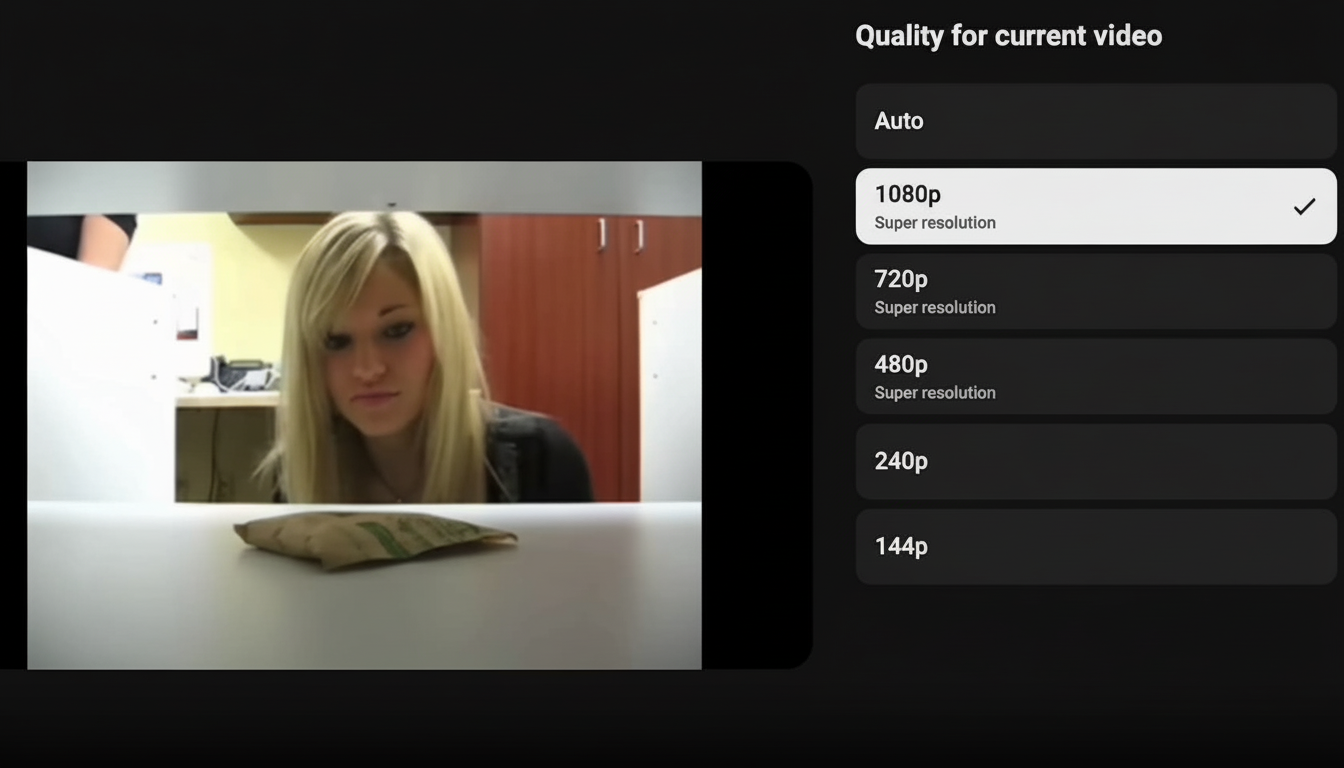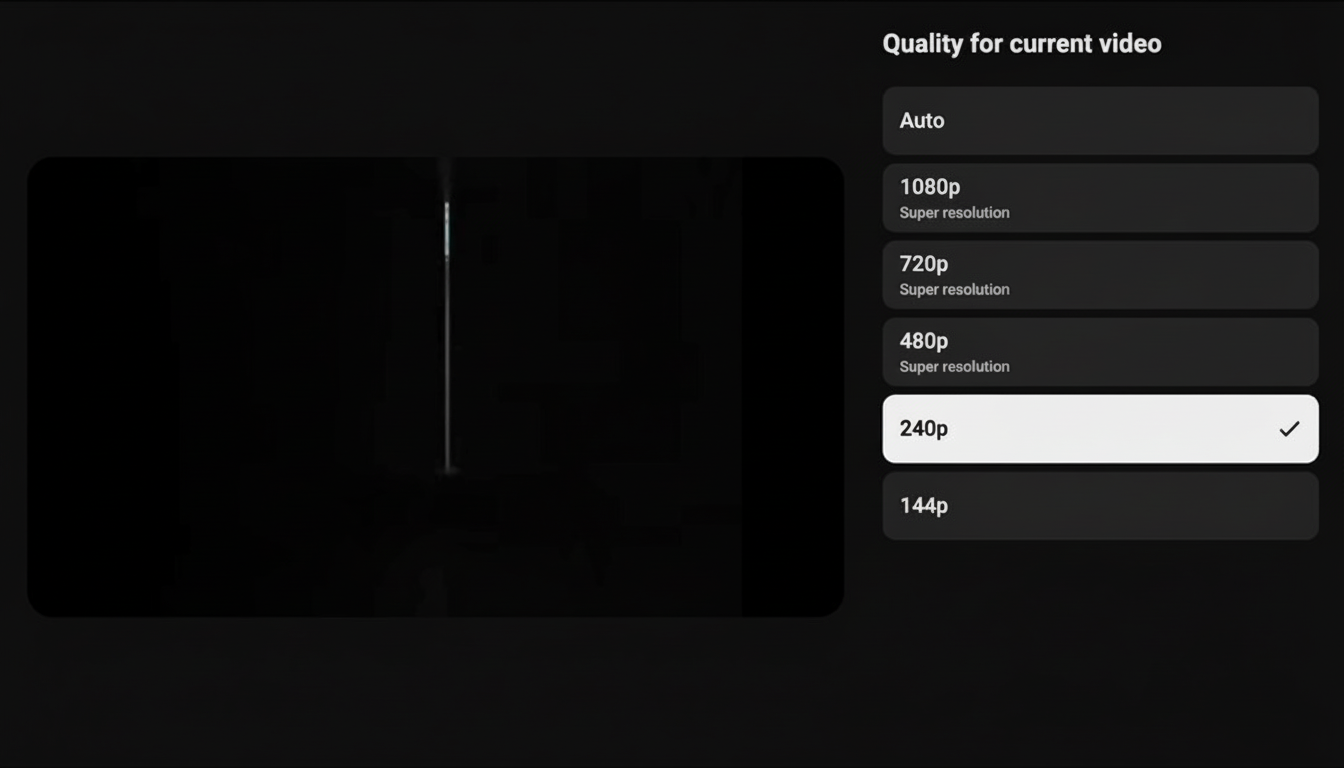YouTube is also debuting an AI-enhanced super resolution framework that is designed to enhance the appearance of low-quality uploads on 4K TVs, smartphones, and online browsers. According to the firm, the technology would produce higher-resolution derivatives for sub-HD video, such as 480p to 720p or 1080p, and will clearly indicate them as “Super resolution,” leaving the originals intact. In the case of offending videos, creators can opt out. Unlike the legacy upscaling chips integrated into your television, this is achieved at the content level.
YouTube produces additional HD copies of a low-res source of material and gives you the option of using them in the quality menu next to the originals. That is an obvious distinction, as server-side or platform-side super resolution may utilize sophisticated video models that examine multiple frames, align motion, reduce compression artifacts, and restore lines and textures that the normal TV scaler cannot retrieve on the fly. From your standpoint, this is the closest to video super resolution, which is very different from the “sharpness” filter into which you route your input. It utilizes temporal intelligence to identify what has changed from one frame to the next. It allows AI to increase the smoothness of gradations, alleviate mosquito noise around text or graphics, and preserve fine detail on your end like hair or trees without blurring them into porridge. Where recent production has old equipment or for content on your given platform, the leap from SD to HD usually is slower but more noticeable.

On modern 4K sets, native TV scalers must stretch every pixel to fill 8 million pixels of screen real estate. When the source is just 480p, the TV is guessing a lot. If YouTube delivers a cleaner 720p or 1080p stream first, the TV’s final stretch to 4K starts from a better baseline—which usually means fewer jagged edges, more legible on-screen text, and less shimmering on fine patterns. The biggest beneficiaries:
- Viewers watching classic clips
- Educational archives
- Retro gaming
- Older news footage
The timing makes sense in the context of larger viewing behaviors. Nielsen’s The Gauge has YouTube regularly leading watch share of streaming on US TVs, and Google has said hundreds of millions of people watch YouTube on living room-connected TVs; sub-HD content at the source just became a quality upgrade for a gigantic slice of living room TV viewing. Google confirmed to Bloomberg’s Chris Welch that super resolution isn’t just for the big screen. The same AI upscaling is on YouTube on the desktop and in phone browsers, raising practical questions about mobile and desktop streams, and the outcome is the same—no matter where you watch, low-res uploads should look cleaner.
For mobile users, the upside is not just in clarity. If YouTube can give a higher-resolution stream generated from a low-res source without a massive bitrate overhead, it could save data and still add to perceived detail. Battery-conscious viewers will want to find out if any device-side processing choices emerge, but YouTube’s labeling ought to make it obvious what is happening.

What viewers and creators should expect from AI super resolution
Look for a “super resolution” tag beside 720p or 1080p in the quality menu where the original upload is below 1080p. YouTube stated original files remain intact, and creators may prefer to forego visual enhancements if they desire full control over how they appear. That flexibility is important after recent discussions concerning automated visual enhancements in short-form video. Scaling is not equivalent to 1080p Premium’s “enhanced bitrate”. The latter produces more detail in the same resolution by streaming more data, while the former can create halos around high-contrast edges, over-sharpen faces, or hallucinate textures on fine patterns. The opt-out switch and explicit labeling are good defenses, and viewers who like to keep the appearance as is can always select the original resolution.
How it compares to other upscaling on TVs and devices
Device-side advancements, such as Nvidia Shield TV’s AI upscaling or the processing in premium Sony and Samsung sets, can also work wonders, but they’re limited to the device processing the video on the fly. YouTube’s platform-level implementation guarantees consistency across smart TVs, streaming sticks, consoles, phones, and browsers. For reference, it’s comparable to the way a few streaming services are utilizing content-aware encoding ladders. However, in this case, they are adding AI-enhanced rungs above the original ladder.
The larger picture for YouTube’s AI super resolution rollout
This AI rollout coincides with a variety of TV-based advancements, including richer previews for immersive channels and better in-platform purchasing possibilities, but super resolution is the flagship since it enhances the extensive back catalog in which countless uploads have never even been in HD. If the implementation delivers everything YouTube claims, the impact is straightforward: you’ll have little reason to accept 480p footage on a 4K display—and, now, you can get the same degree of service on your phone and laptop.

